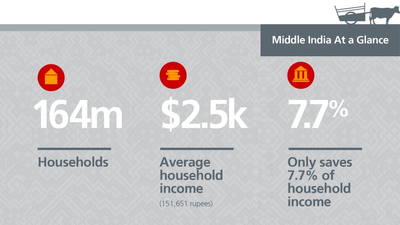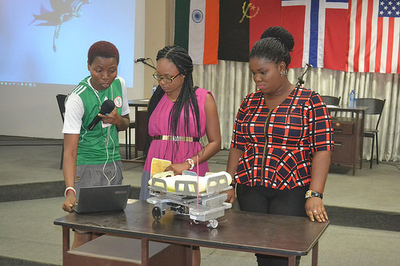India’s economy is poised for take-off. GDP is on the rise. Inflation is the lowest in decades. India’s doors are open to foreign investment. And earlier in the month, the Indian Parliament paved the way for the “mother of all economic reforms,” a new tax scheme to make it easier to do business across state lines, essentially creating a single economic zone. The World Bank predicts that India could be the world’s third-largest economy within 10 years.
These and other reforms introduced by the Modi government are desperately needed as one million enter the job market every month, and millions more knock on the door of the middle class.
India, says the author Aatish Taseer, may not yet be a middle class country, “but it [has] begun to think of itself as one.”
In a new report published by Mastercard Center for Inclusive Growth this week, Chief Economist, Yuwa Hedrick-Wong, highlights how empowering the 164 million Indian households who are not poor but not quite middle class can help ensure the success of Prime Minister Modi’s plans for modern India.
“Transforming Middle India into the nation’s genuine middle class would fundamentally support the government’s ambitious efforts to increase GDP … ”
India’s Precarious Middle
Globalization has been good to India’s consumer class. These top 20 percent of earners, Hedrick-Wong notes, have made significant strides in job security, income, savings and more. At the same time, the poorest Indians have benefited from government programs and supports.
What has been overlooked, he says, is Middle India, the 60 percent of households in the middle of the income spectrum that should be the genuine middle class of India.

Hedrick-Wong’s analysis is based on detailed household survey data produced by the Center’s senior fellow Rama Bijapurkar and her team at the think tankPeople Research on India’s Consumer Economy. Their research offers a rare real-world view of how Indian households at all income levels earn, spend, save, live and work.
While Middle India households are gaining education, they still lag behind those at the top. Middle India’s household income is barely keeping pace with expenses, and their job security is closer to that of poor India. Only 28 percent of Middle India households said they have enough income to easily meet its family’s basic needs.
Likewise, although 87 percent of Middle India has a bank account, only about 13 percent has tapped banks for a personal loan. Their access to household amenities like toilets, electricity, and clean tap water also lags rich India. Only 56 percent of Middle India, for example, has a toilet in the home, compared with 85 percent of rich India.
How Connected Are Indian Households to Basic Amenities and Services?

Household Amenities and Service (%), ICE 360 2014 survey; Note: “Electricity” reflects presence of a connection not frequency or reliability
Despite all the challenges facing Middle India, the survey data also reveal a healthy level of confidence, self-reliance and resilience.
Under the right conditions, argues Hedrick-Wong, Middle India could become source of economic dynamism for years to come.
Inclusive Growth Can Transform Middle India
A focus on inclusive growth could help make it happen. Hedrick-Wong says that “connecting more working Indians with the formal economy through more stable jobs could generate huge benefits,” including greater capacity for longer-term financial planning, saving and investing. About 33.6 million households in Middle India are not connected to the formal economy.
Around 90% of all Indian households said it was important for India to achieve inclusive growth.
Inclusive growth strategies focused on providing access to networks and resources that power people’s productivity would help drive domestic demand for goods and services, which in turn, would increase business investment and innovation.
Part of that effort must attend to India’s infrastructure, from household plumbing to Internet access. Efficient and affordable transportation will help Indians travel for better jobs. Having a separate kitchen and being able to cook with liquefied petroleum gas (LPG) means healthier homes and more time for other pursuits. More toilets in the home save lives. Roughly 300,000 childrenunder age five die each year in India due to diarrhea, often from unsanitary public toilets and not washing their hands with soap. Water from a tap in the home also saves time and improves health. The annual global economic losses associated with inadequate water supply and sanitation are estimated at $260 billion.
Read more: https://medium.com/@CNTR4growth/the-myth-of-the-middle-class-in-india-97c468b23bfd#.timg9xymn The Myth of the Middle Class in India – A new report from the Mastercard Center for Inclusive Growth offers a data-driven view of how Indian households live, work, earn and save.

